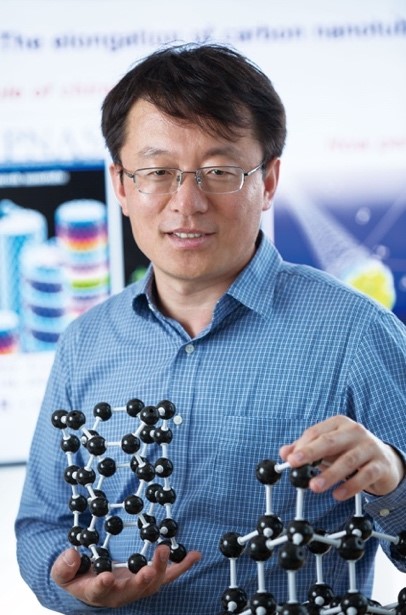Academic Information
Title: The Theory of Self-Limited Growth of Graphene
Speaker: Prof. Feng Ding (Ulsan National Institute of Science and Technology)
Time: 10:00-11:00(Tuesday),25/12/2018
Place: Room 506, Building 9, Ming Palace Campus
Organizer: Department of international cooperation, State key laboratory of mechanics and control of mechanical structures, College of Aerospace Engineering.
The summary of report:
The concept of self-limited growth was broadly adopted to explain the chemical vapor deposition (CVD) growth of single layer graphene on Cu surface, while there are still many mysteries regarding this concept are not well understood, such as the saturated coverage of graphene is less than 100% in some cases. Based on our previous theoretical exploration on graphene CVD growth, we propose a new theoretical model to understand the above phenomenon.
By considering the balancing of the active carbon precursors, such as CH3 and CH2, on the catalyst surface and in the carrier gas, we have found out how the graphene coverage affects the concentration of precursors on the metal surface and therefore the graphene CVD growth. A theoretical model was proposed to describe the evolution of graphene during graphene CVD growth on a substrate surface. The numerical fitting shows a perfect match between our model and experimental data and the phase field theory (PFT) simulation developed based on the new model represent the final structure of CVD graphene domains on a metal substrate (Figure). This new theoretical model of graphene self-limited growth, except for a better understanding of the graphene growth mechanism, could also provide new insights into the fabrication of wafer scale graphene films.
Speaker Profile:

Prof. Feng Ding obtained his Bs, Ms and PhD degrees from Huazhong University of Science and Technology, Fudan University and Nanjing University in 1993, 1996 and 2002, respectively. Then he was a Postdoctoral Research Fellow in Gothenburg University and Chalmers University in Sweden from 2003 to 2005. From 2005, he joined Rice University as a Research Scientist until the end of 2008. From 2009-2016, he worked in the Institute of Textile and Clothing of Hong Kong Polytechnic University as an Assistant Professor and Associate Professor (from 2013). From the beginning of 2017, he joined UNIST as a Distinguished Professor and the IBS-CMCM as a group leader.